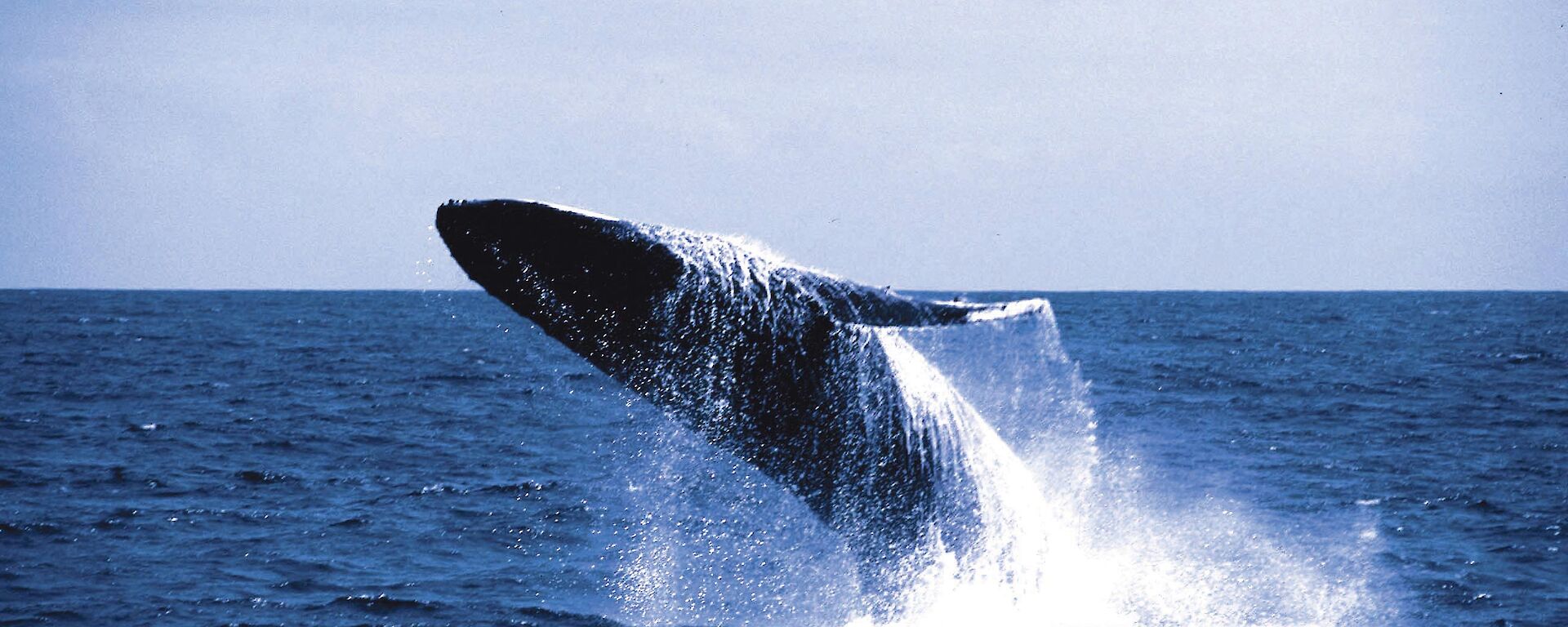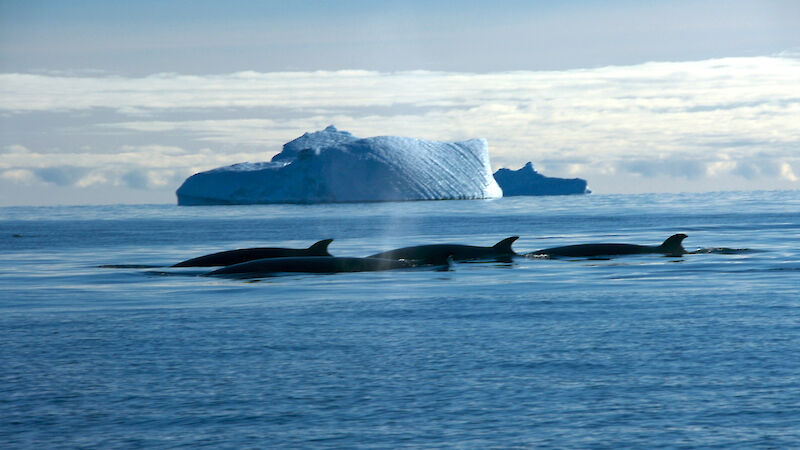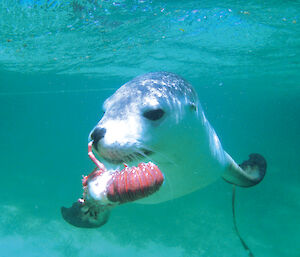The Australian Government has approved more than $700,000 funding for a range of marine mammal projects over the next year.
The Assistant Minister for the Environment and Water Resources, John Cobb, said that proper management and conservation of marine mammals was critical to their survival.
Eleven projects with total funding of $790,000 will be carried out through the Australian Centre for Applied Marine Mammal Science, located at the Australian Antarctic Division in Hobart and headed by Dr Nick Gales.
Projects include:
- testing the feasibility of using unmanned aerial vehicles for surveys of marine mammals;
- population status of West Australian humpbacks and pygmy blue whales;
- impact of noise on whales;
- improving information on dugong movement and habitat through innovative tracking technology;
- monitoring fur seal pup production and population.
Projects are assessed by a scientific committee before undergoing evaluation by a broader advisory committee which includes Commonwealth and state governments, non-government organisations, fisheries bodies, indigenous groups and industry.
The Marine Mammal Centre was established in 2006 with funding of $2.5 million over four years, from the Commonwealth Environment Research Facility (CERF), to focus research on whales, seals, sea lions, dolphins and dugongs.
Mr Cobb said that a dedicated centre was an excellent way to draw together specialists from around the country whose expertise is directed towards good management and conservation practices for our marine mammals.
Summary of funding
1. Improving information on dugong movements and habitat use using innovative tracking technology — $67,647.00
To enhance understanding of dugong large-scale movements and sub-tidal habitat use by assessing the potential of the innovative Fastloc GPS technology to mitigate the sampling biases inherent in tracking dugongs using GPS tags, which provide few location fixes from animals in habitats deeper than ~3m and/or moving quickly. The new generation Fastloc technology should increase the chances of recording an animal’s location irrespective of its speed and location. The resultant improved understanding of the large-scale movements and sub-tidal habitat use of dugongs will inform policy for managing important dugong habitats.
2. Australian fur seal pup production and population trends — $25,900.00
The aim is to estimate Australian fur seal pup numbers at all colonies following the 2007/08 pupping period. This will repeat the first thorough census of pup numbers at all breeding sites conducted in 2002/03. Current data on population sizes and trends are important for understanding and conservation of marine mammals. Australian fur seals are endemic to Bass Strait, breed at 10 sites and are the marine mammal that reportedly interacts most frequently with fisheries in Australia. The 23,000 pups estimated in 2002/03 represented a near-doubling of numbers since the 1970s, when seals became protected species. Is this trend continuing?
3. New Computerised Fluke Matching System for Humpback Whales — $53,347.00
This project will result in a new computer-based photo-recognition matching system that efficiently identifies individuals and finds resights in photo-identification catalogues of humpback whales. This project builds on previously successful research using a unique multifaceted computer-based recognition system to overcome the overwhelming problems of manually matching photographs of humpback whale flukes in large catalogues. The new system provides a rapid and improved method of obtaining mark-recapture data (RP4a) for abundance estimates and trends (RP1a), independent movements and levels of interchange among populations of humpback whales (RP1c) in Australia and the South Pacific for improved management and conservation outcomes.
4. Population status of Western Australian humpback whales, 2008 — $177,750.00
The project will complement a major existing data set from surveys undertaken in 1999 and 2005 on northward migrating humpback whales from one of seven currently recognised southern hemisphere breeding stocks (Breeding Stock D). As in 2005, there will be two components (i) an aerial survey over two months, covering the peak migration period past Shark Bay, WA, where regular aerial surveys provided relative abundance and trend information over 1982–1994; (ii) a land-based survey over a shorter period, to ‘ground-truth’ the aerial survey. The result should be an estimated current absolute abundance for this Breeding Stock, together with a comparison with 2005 and 1999 results, for use in comprehensive assessments of southern hemisphere whale stocks, essential for their conservation and rational management.
5. Using Unmanned Aerial Vehicles for surveys of marine mammals in Australia: test of concept — $86,912.00
The conservation and management of many marine mammal populations relies on accurate and precise estimates of their abundance and distribution using aerial surveys. We aim to test whether Unmanned Aerial Vehicles (UAVs) can replace manned aircraft to (1) reduce costs, (2) reduced human risk, (3) deliver superior data on detection, location, abundance and identification of marine mammal species. This project aims to (1) develop and test technology and techniques for UAV surveys and (2) conduct and compare traditional manned and UAV surveys of dugongs and humpback whales to test the viability of UAV surveys.
6. Humpback whales and the impact of noise: Controlled Exposure Experiments — $81,180.00
Previous Humpback Whale Acoustic Research Collaboration (HARC) experiments successfully developed a methodology for performing Controlled Exposure Experiments (CEEs) and measuring the behaviours of humpbacks at multiple resolutions, in a well defined study area. This project will concentrate on CEEs and (1) document the range of behavioural reactions observed by the whales, (2) measure the received acoustic levels that elicit reactions, and (3) place the range of reactions observed into the context of normal behaviours for these whales at this site. This project will improve our knowledge of the effects of anthropogenic noise on humpback whale behaviour and acoustic communication.
7. Population size and distribution of Western Australian pygmy blue whales — $44,000.00
This project will investigate the movement patterns and population size of the pygmy blue whales that aggregate off south-western Australia each autumn. Currently it is not known if these animals represent a sub-population or if they range-widely and form part of a larger population with linkage to other known aggregations in Australian waters. We will deploy small, biologically inert, implantable satellite-tags to investigate the movements of these whales and, through supplement existing data, employ genetic tagging and photo-identification data to estimate population size and the recurrence of the same individuals between years.
8. Population structure and sub-structure of Australian humpback whales — $42,000.00
Through the genetic analysis of biopsy samples collected in north-western and south-eastern Australia this project aims to reveal:
1) the extent of exchange of individuals between western Australian, eastern Australian and potential linkages to adjacent Pacific populations;
2) whether whales sampled in migratory corridors along the Australian coast belong to one or more breeding populations;
3) whether temporal or spatial substructure exists within the west Australian breeding population;
The data provided by this research will help to understand the impact of past whaling activity and also inform any assessment of possible impacts from the proposed lethal-take of humpback whales by the Japanese JARPA II whaling program.
9. Methods for distinguishing foraging ecotypes within and among Australian sea lion subpopulations: their importance to defining genetic population structure and assisting spatial management of fisheries — $84,564.00
This project aims to develop and validate stable isotope methods to distinguish different foraging ecotypes (inshore and offshore) among Australian sea lion (ASL) adult females and their dependent pups, and use pup sampling to screen the foraging ecotype profiles of ASL subpopulations. Molecular genetic analysis of the same pups will then be used to assess the importance of geographic distance and foraging ecotype in defining genetic population structure. These advances will be used to improve subpopulation based foraging models to assist spatial management of fisheries, improve our understanding of genetic population structure, and develop appropriate population surveys for the species.
10. Developing population monitoring protocols to determine the abundance of Australian sea lions at key subpopulations in South Australia — $59,778.00
Traditional methods of censusing Australian sea lion populations have used visual counts of pups during the peak of the protracted pupping season to provide a point estimate that can significantly underestimated pup production. As a consequence, quality time-series data on the status of populations are essentially absent. This proposal aims to role out a population survey strategy at key colonies in South Australia. These surveys will enable accurate estimation of pup production with confidence limits, and methods will be tailored for different sized populations. Effective management and recovery of Australian sea lion populations will need to be underpinned by an ability to detect changes in the status of populations over the shortest possible time-periods. This proposal builds upon a project funded by NHT/ACAMMS in 2006/07 to develop new population monitoring methods for the threatened Australian sea lion.
11. Population-level dietary genotyping: a re-evaluation of Australian fur seal diet by pyrosequencing of prey DNA in faeces — $62,500.00
Accurate knowledge of diet is essential for understanding marine mammal behaviour, ecosystem dynamics and potential impacts of fisheries. Traditional diet determination, through analysis of prey hard parts in faeces, is biased by differential prey recovery. Recent research shows this problem can be overcome through DNA-based faecal analysis. We will carry out a comprehensive analysis of prey DNA sequences in faeces collected from the Australian fur seal, Arctocephalus pusillus doriferus, using recently developed pyrosequencing technology. This novel approach of population-level dietary genotyping will provide a new perspective on diet of a key marine predator in Australian waters and provide a template for future diet studies on other pinnipeds, whales and dolphins.




